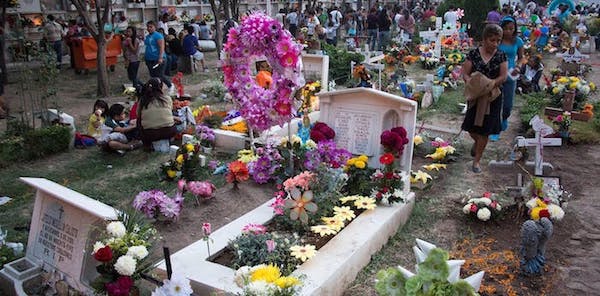[W]hat can be done about negative stereotypes that portray older adults as out-of-touch, useless, feeble, incompetent, pitiful and irrelevant?
From late-night TV comedy shows where supposedly clueless older people are the butt of jokes to ads for anti-aging creams equating youth with beauty and wrinkles with decay, harsh and unflattering images shape assumptions about aging. Although people may hope for good health and happiness, in practice they tend to believe that growing older involves deterioration and decline, according to reports from the Reframing Aging Initiative.
Dismal expectations can become self-fulfilling as people start experiencing changes associated with growing older — aching knees or problems with hearing, for instance. If a person has internalized negative stereotypes, his confidence may be eroded, stress responses activated, motivation diminished (“I’m old, and it’s too late to change things”) and a sense of efficacy (“I can do that”) impaired.
Health often suffers as a result, according to studies showing that older adults who hold negative stereotypes tend to walk slowly, experience memory problems and recover less fully from a fall or fracture, among other ramifications. By contrast, seniors whose view of aging is primarily positive live 7.5 years longer.
Can positive images of aging be enhanced and the effects of negative stereotypes reduced? At a recent meeting of the National Academies of Sciences’ Forum on Aging, Disability and Independence, experts embraced this goal and offered several suggestions for how it can be advanced:
Become aware of implicit biases. Implicit biases are automatic, unexamined thoughts that reside below the level of consciousness. An example: the sight of an older person using a cane might trigger associations with “dependency” and “incompetence” — negative biases.
Forum attendee Dr. Charlotte Yeh, chief medical officer for AARP Services Inc., spoke of her experience after being struck by a car and undergoing a lengthy, painful process of rehabilitation. Limping and using a cane, she routinely found strangers treating her as if she were helpless.
“I would come home feeling terrible about myself,” she said. Decorating her cane with ribbons and flowers turned things around. “People were like ‘Oh, my God that’s so cool,’” said Yeh, who noted that the decorations evoked the positivity associated with creativity instead of the negativity associated with disability.
Implicit biases can be difficult to discover, insofar as they coexist with explicit thoughts that seem to contradict them. For example, implicitly, someone may feel “being old is terrible” while explicitly that person may think: “We need to do more, as a society, to value older people.” Yet this kind of conflict may go unrecognized.
To identify implicit bias, pay attention to your automatic responses. If you find yourself flinching at the sight of wrinkles when you look in the bathroom mirror, for instance, acknowledge this reaction and then ask yourself, “Why is this upsetting?”
Use strategies to challenge biases. Patricia Devine, a professor of psychology at the University of Wisconsin-Madison who studies ways to reduce racial prejudice, calls this “tuning in” to habits of mind that usually go unexamined.
Resolving to change these habits isn’t enough, she said, at the NAS forum’s gathering in New York City: “You need strategies.” Her research shows that five strategies are effective:
- Replace stereotypes. This entails becoming aware of and then altering responses informed by stereotypes. Instead of assuming a senior with a cane needs your help, for instance, you might ask, “Would you like assistance?” — a question that respects an individual’s autonomy.
- Embrace new images. This involves thinking about people who don’t fit the stereotype you’ve acknowledged. This could be a group of people (older athletes), a famous person (TV producer Norman Lear, now 95, who just sold a show on aging to NBC) or someone you know (a cherished older friend).
- Individualize it. The more we know about people, the less we’re likely to think of them as a group characterized by stereotypes. Delve into specifics. What unique challenges does an older person face? How does she cope day to day?
- Switch perspectives. This involves imagining yourself as a member of the group you’ve been stereotyping. What would it be like if strangers patronized you and called you “sweetie” or “dear,” for example?
- Make contact. Interact with the people you’ve been stereotyping. Go visit and talk with that friend who’s now living in a retirement community.
Devine’s research hasn’t looked specifically at older adults; the examples above come from other sources. But she’s optimistic that the basic lesson she’s learned, “prejudice is a habit that can be broken,” applies nonetheless.
Emphasize the positive. Another strategy — strengthening implicit positive stereotypes — comes from Becca Levy, a professor of epidemiology and psychology at Yale University and a leading researcher in this field.
In a 2016 study, she and several colleagues demonstrated that exposing older adults to subliminal positive messages about aging several times over the course of a month improved their mobility and balance — crucial measures of physical function.
The messages were embedded in word blocks that flashed quickly across a computer screen, including descriptors such as wise, creative, spry and fit. The weekly sessions were about 15 minutes long, proving that even a relatively short exposure to positive images of aging can make a difference.
At the forum, Levy noted that 196 countries across the world have committed to support the World Health Organization’s fledgling campaign to end ageism — discrimination against people simply because they are old. Bolstering positive images of aging and countering the effect of negative stereotypes needs to be a central part of that endeavor, she remarked. It’s also something older adults can do, individually, by choosing to focus on what’s going well in their lives rather than what’s going wrong.
Claim a seat at the table. “Nothing about us without us” is a clarion call of disability activists, who have demanded that their right to participate fully in society be recognized and made possible by adequate accommodations such as ramps that allow people in wheelchairs to enter public buildings.
So far, however, seniors haven’t similarly insisted on inclusion, making it easier to overlook the ways in which they’re marginalized.
At the forum, Kathy Greenlee, vice president of aging and health policy at the Center for Practical Bioethics in Kansas City and formerly assistant secretary for aging in the U.S. Department of Health and Human Services, called for a new wave of advocacy by and for seniors, saying, “We need more older people talking publicly about themselves and their lives.”
“Everybody is battling aging by themselves, reinforcing the notion that how someone ages is that individual’s responsibility” rather than a collective responsibility, she explained.
Underscoring Greenlee’s point, the forum didn’t feature any older adult speakers discussing their experiences with aging and disability.
In a private conversation, however, Fernando Torres-Gil, the forum’s co-chair and professor of social welfare and public policy at UCLA, spoke of those themes.
Torres-Gil contracted polio when he was 6 months old and spent most of his childhood and adolescence at what was then called the Shriners Hospital for Crippled Children in San Francisco. Back then, kids with polio were shunned. “It’s a real tough thing to be excluded,” he remembered.
His advice to older adults whose self-image is threatened by the onset of impairment: “Persevere with optimism. Hang in there. Don’t give up. And never feel sorry for yourself.”
Now age 69, Torres-Gil struggles with post-polio syndrome and has to walk with crutches and leg braces, which he had abandoned in young adulthood and midlife. “I’m getting ready for my motorized scooter,” he said with a smile, then quickly turned serious.
“The thing is to accept whatever is happening to you, not deny it,” he said, speaking about adjusting attitudes about aging. “You can’t keep things as they are: You have to go through a necessary reassessment of what’s possible. The thing is to do it with graciousness, not bitterness, and to learn how to ask for help, acknowledging the reality of interdependence.”
Complete Article ↪HERE↩!












